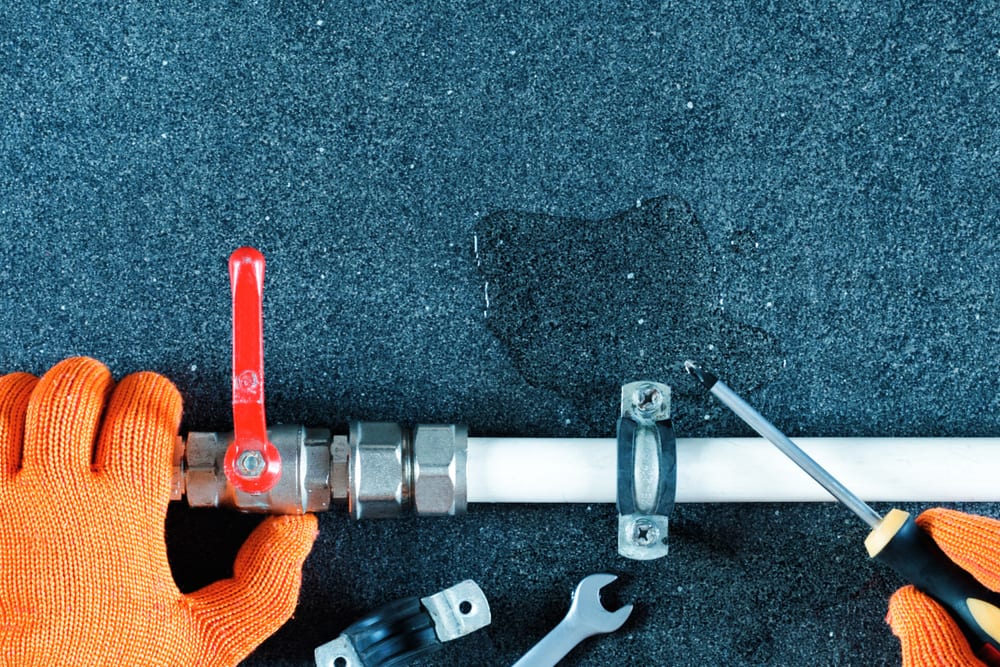What're your thoughts concerning Leaking water lines?

Early detection of dripping water lines can mitigate a prospective calamity. Some little water leaks may not be visible.
1. Check Out the Water Meter
Every house has a water meter. Inspecting it is a proven manner in which helps you find leakages. For starters, shut off all the water resources. Make certain no one will certainly purge, use the faucet, shower, run the washing maker or dish washer. From there, most likely to the meter and also watch if it will certainly transform. Since no one is using it, there should be no motions. If it relocates, that shows a fast-moving leakage. Furthermore, if you identify no changes, wait a hr or two and inspect back once again. This means you might have a sluggish leakage that can also be below ground.
2. Check Water Consumption
Assess your water costs and also track your water usage. As the one paying it, you ought to observe if there are any type of disparities. If you detect sudden changes, despite your intake coinciding, it indicates that you have leaks in your plumbing system. Remember, your water expense must fall under the same array on a monthly basis. An abrupt spike in your expense indicates a fast-moving leakage.
A stable rise every month, even with the very same practices, reveals you have a slow leakage that's likewise slowly rising. Call a plumber to completely examine your residential property, especially if you really feel a warm location on your floor with piping below.
3. Do a Food Coloring Test
When it comes to water usage, 30% comes from commodes. If the color somehow infiltrates your dish during that time without flushing, there's a leakage in between the container and dish.
4. Asses Outside Lines
Don't neglect to check your outside water lines also. Test spigots by connecting a yard hose. Must water permeate out of the connection, you have a loose rubber gasket. Change this and also make certain all connections are limited. If you have actually obtained a sprinkler system, it will help get it properly examined as well as preserved every year. One little leak can waste tons of water as well as increase your water costs.
5. Evaluate and also Examine the Scenario
Property owners need to make it a habit to inspect under the sink counters as well as also inside cabinets for any bad odor or mold and mildew growth. These 2 red flags suggest a leak so timely focus is required. Doing routine evaluations, also bi-annually, can conserve you from a significant issue.
Check for discolorations and deteriorating as most appliances as well as pipelines have a life span. If you suspect dripping water lines in your plumbing system, don't wait for it to intensify.
Early discovery of dripping water lines can reduce a possible disaster. Some small water leakages may not be noticeable. Checking it is a guaranteed means that assists you uncover leaks. One little leak can squander bunches of water as well as increase your water bill.
If you presume dripping water lines in your plumbing system, don't wait for it to rise.
How to Know If Your Home Has a Hidden Leak
Water Meter Reveals Inexplicable Water Usage
If you’d like to test whether or not there’s a leak somewhere in your home, you can do this using your water meter. Here is how to conduct the test:
Don’t use any water in your home for at least 30 minutes; this also means not turning on faucets or water-using appliances.
Go outside, and check your water meter for activity.
If your water meter shows that there was activity, even though no one was using any water, this proves that there is a leak in your home.Visible Mold or Mildew Growth
Leaks behind walls create moist, dark environments that allow mold and mildew to grow and thrive. Eventually, you might see mold growth forming on the wall closest to a hidden leak.
If mold is growing in an area that receives a high amount of moisture, such as a bathroom, it may simply be an indication that better ventilation is needed. However, if you see mold growth on a wall or the ceiling in an area where you would not expect, you probably have a hidden leak.
Musty, Mildew Odor
Sometimes you might not be able to see the mold or mildew that is growing as a result of a leak. However, the smell can give the problem away just as easily. If you catch a whiff of something musty, there’s a good chance that old water is collecting somewhere in your home that you can’t see.
Stained/Warped Walls, Ceilings, or Floors
When your home soaks up water, a variety of red flags can become visible, including ceiling stains, bubbling drywall, warped walls, and sagging floors. While these issues can be caused by excess humidity, they can also be signs that a pipe or plumbing connection has started leaking behind your walls.
Inexplicably High Water Bill
After a while, you get a general sense for what your water bill should be. If you own a pool or sprinkler system, your bill will tend to be higher during summer. However, if you receive a water bill that seems especially high, and you can’t figure out what caused it, then you may have a hidden leak somewhere that’s increasing your bill.
https://www.plumbingjoint.com/blog/2019/july/how-to-know-if-your-home-has-a-hidden-leak/

I am just very intrigued by Locating water leaks and I really hope you appreciated the entire post. Are you aware of another person who is interested in the subject? Please feel free to promote it. Thanks a lot for taking the time to read it.
Quick help? Contact.